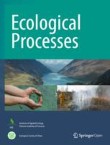Combining in-situ water quality and remotely sensed data across spatial and temporal scales to measure variability in wet season chlorophyll-a: Great Barrier Reef lagoon (Queensland, Australia)
Combining in-situ data from single-point time series with remotely sensed spatial data allowed a greater elucidation of changes in chlorophyll-a concentrations through wet season conditions in the Great Barrie...
